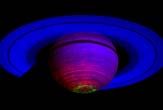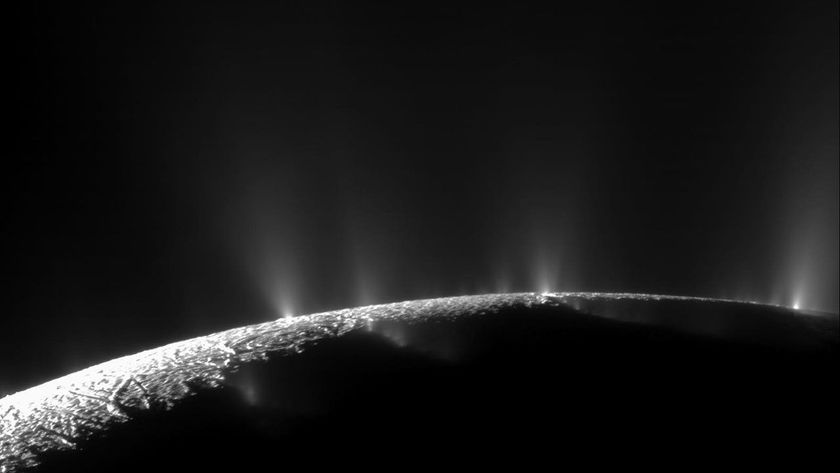Spectacular Aurora on Saturn Shines in New Video

Earth isn't the only planet in the solar system with a dazzling northern lights show. A new video from Saturn shows spectacular aurora on the ringed planet, revealing new details about how the phenomenon works.
The Saturn aurora movie was made from images collected by NASA's Cassini spacecraft’s visual and infrared mapping spectrometer (VIMS) instrument. [Video of Saturn auroras.]
"Cassini's instruments have been imaging the aurora in magnificent detail, but to understand the overall nature of the auroral region we need to make a huge number of observations -- which can be difficult because Cassini observation time is in high demand," said study leader Tom Stallard of the U.K.'s University of Leicester in a statement. "However, there are VIMS observations of numerous other scientific targets that also include auroral information. Sometimes the aurora can be clearly seen, sometimes we have to add multiple images together to produce a signal."
As a whole, the collection of observations should help build up a better understanding of how auroras happen across the solar system, he said.
Stallard will present preliminary results from his study at the European Planetary Science Congress in Rome on Friday (Sept. 24).
In the new Cassini video, the aurora can clearly be seen to vary significantly over the course of a Saturnian day, which lasts around 10 hours and 47 minutes. On the noon and midnight sides (to the left and right respectively) the aurora can be seen to brighten significantly for periods of several hours, suggesting the brightening is connected with the direction of the sun.
Other features can be seen rotating along with the underlying planet, reappearing at the same time and the same place on the second day. This suggests that they are directly controlled by the direction of Saturn's magnetic field, researchers said.
Sign up for the Live Science daily newsletter now
Get the world’s most fascinating discoveries delivered straight to your inbox.
As with Earth's northern and southern lights, the auroras on Saturn are created when solar wind particles are channeled into the planet's magnetic field toward its poles. There, they interact with electrically charged gas (plasma) in the upper atmosphere and emit light.
However, aurora features on Saturn can also be caused by electromagnetic waves generated when its moons move through the plasma that fills the planet's magnetosphere.
To date, Stallard and his colleagues have investigated some 1,000 images from the 7,000 that Cassini's VIMS instrument has recorded of Saturn's auroral region.
"Saturn's aurorae are very complex and we are only just beginning to understand all the factors involved," Stallard said. "This study will provide a broader view of the wide variety of different auroral features that can be seen, and will allow us to better understand what controls these changes in appearance."












